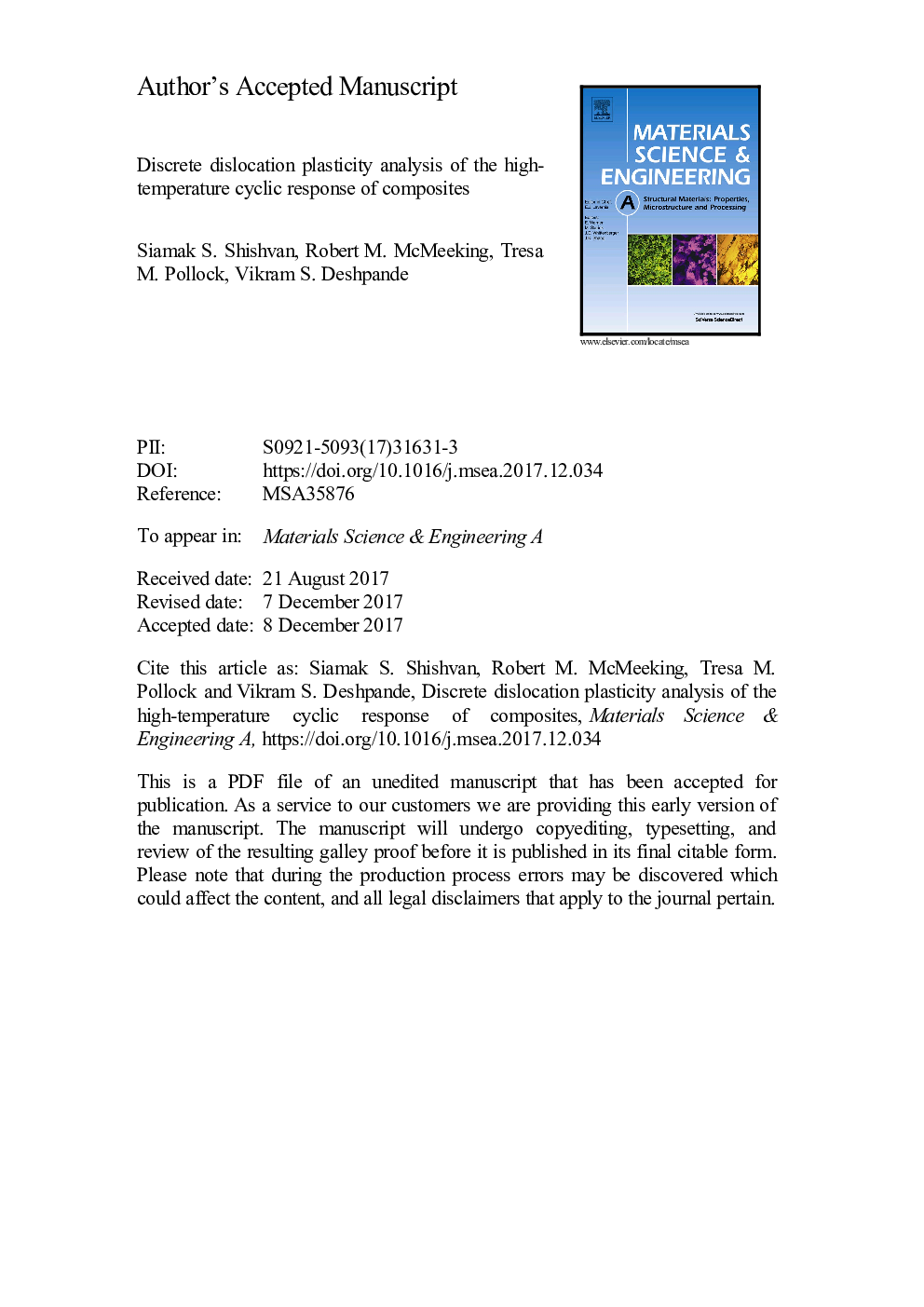| Article ID | Journal | Published Year | Pages | File Type |
|---|---|---|---|---|
| 7974092 | Materials Science and Engineering: A | 2018 | 18 Pages |
Abstract
Discrete dislocation plasticity (DDP) analysis of the high-temperature cyclic deformation of two-phase composites comprising a plastic matrix and elastic precipitates is presented. Deformation of the matrix is by climb-assisted glide of dislocations while the precipitates deform by a combination of bulk elasticity and stress-driven interfacial diffusion. The DDP calculations predict a cyclically softening response due to the formation of dislocation cell structures within the matrix. The dislocation cell sizes decrease with decreasing size of the unit cell (or equivalently matrix channels) and this results in an increased cyclic softening rate in composites with smaller unit cells. Interfacial diffusion also enhances the formation of dislocation cell structures and thereby promotes cyclic softening. These results are consistent with predictions of the creep behaviour that indicate that the increase in the creep rate (i.e. tertiary creep) is also associated with the formation of dislocation cell structures within the matrix.
Related Topics
Physical Sciences and Engineering
Materials Science
Materials Science (General)
Authors
Siamak S. Shishvan, Robert M. McMeeking, Tresa M. Pollock, Vikram S. Deshpande,
